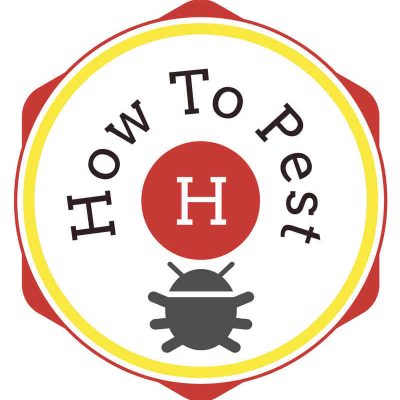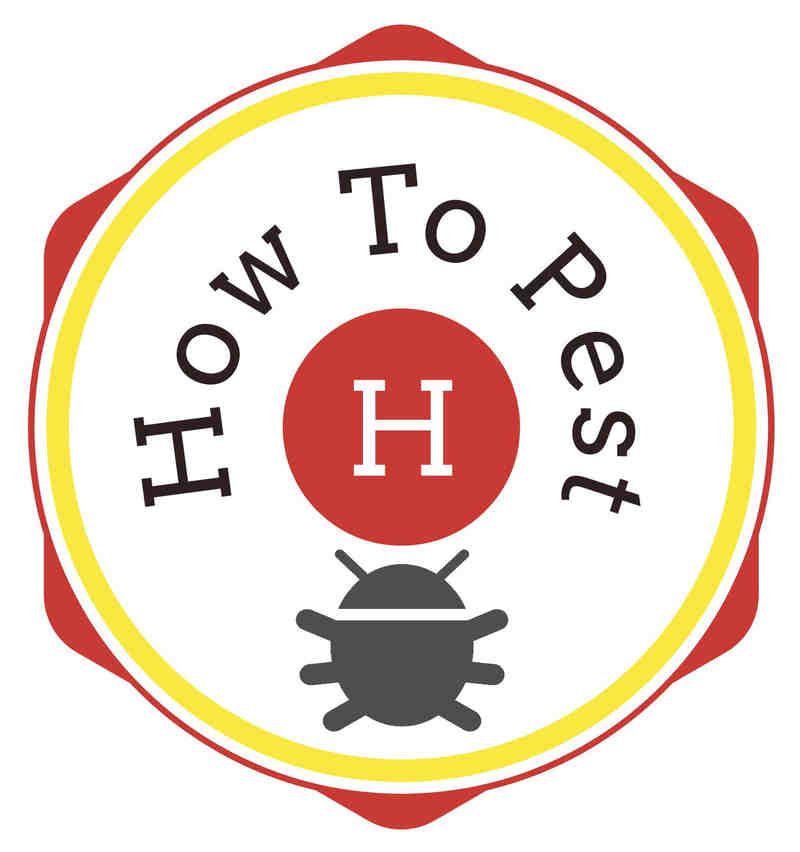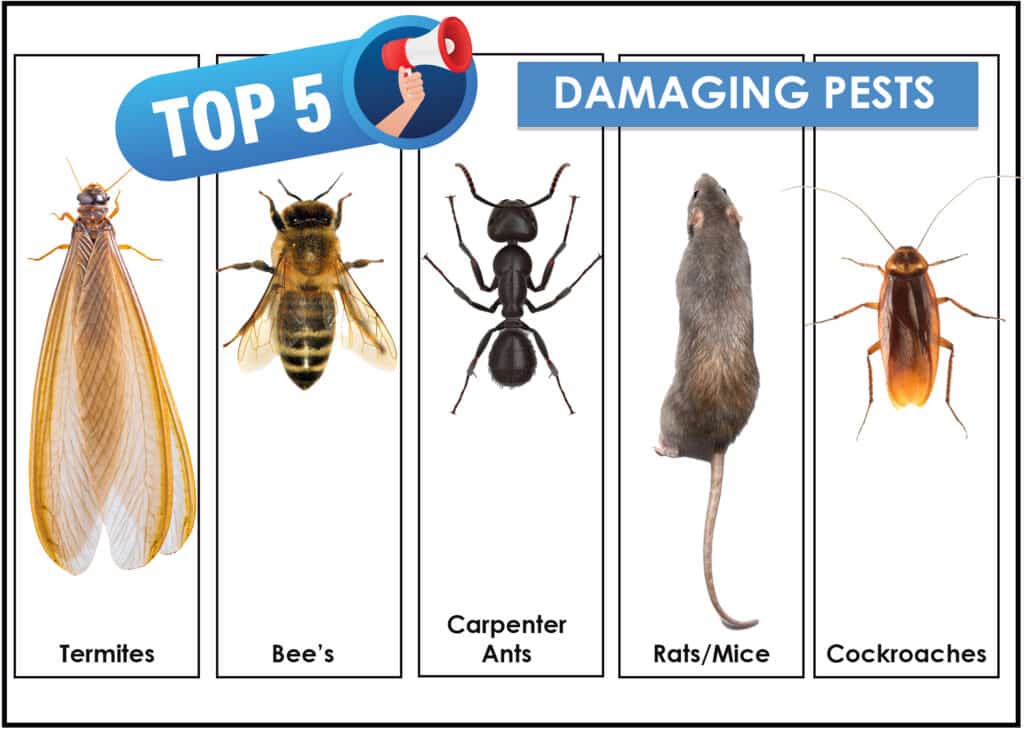
Ever wondered what creatures could be gnawing away at your beloved home without you even realizing it? It’s not a pleasant thought and even less pleasant to your pocketbook. But, knowing what to keep an eye out for can save you a whole lot of money in the long run.
Let us talk about the top 5 pests that can cause the most damage to your home if not quickly addressed:
- Termites
- Bees
- Carpenter Ants
- Rats
- Cockroaches
Let’s dive into each one in detail and explore the damages they could cause. It’s time to take action and protect your home.
Termites:
How to Identify Termites:
Termites are often mistaken for ants because of their similar size and structure. However, unlike ants, termites have straight antennae, a uniform body shape, not constricted at the waist, and their wings are of the same length.
Common Signs of Termites:
- Termite Wings: Both winged ants and termites lose their wings. If you find small, discarded wings around your home, it may be a sign of a termite infestation.
- Mud Tubes: Termites construct these small, tube-like structures as they travel from their colony to their food source (your house).
- Termite Droppings: Also known as frass, termite droppings resemble small, wood-colored pellets.
Damage Caused by Termites:
Termites are often called ‘silent destroyers’ due to their ability to chew through wood, flooring, even wallpaper without immediate signs of damage.
- Termites primarily feed on wood. This could lead to structural damage in homes, impacting the integrity of your house.
- While feeding, they burrow mazes of tunnels and galleries in the structures, weakening the wood internally.
- Termites can also damage plaster and metal siding.
- Mold growth is another common problem related to termite damage.
Note: It’s super important to regularly check your home for any signs of termites and termite damage, due to the potential extensive harm and costly repairs they can cause. Taking immediate action at the first signs of an termite infestation can save your home from significant damage.
Bee’s
Have you ever considered that bees might be a pest in your home? It’s certainly not something that comes to mind immediately, but bees can cause significant damage if left unchecked. Let’s learn about the signs of a potential bee infestation and how they can harm your home.
Identifying a Bee Infestation
Observation is the key. Be observant of the following signs:
- Buzzing noise: If you hear consistent buzzing sounds from your walls or ceilings, it’s a strong indicator of a bee infestation.
- Bee sightings: Regular sightings of bees around your home is another sign you cannot overlook.
- Beehive: Discovering a beehive in or around your house is a sure-fire sign of an infestation.
Note: If you find an active beehive, never attempt to remove it without professional help as it can be dangerous.
Damage Caused by Bees
Yes, bees do more than just buzzing. They can cause physical and structural harm to your home.
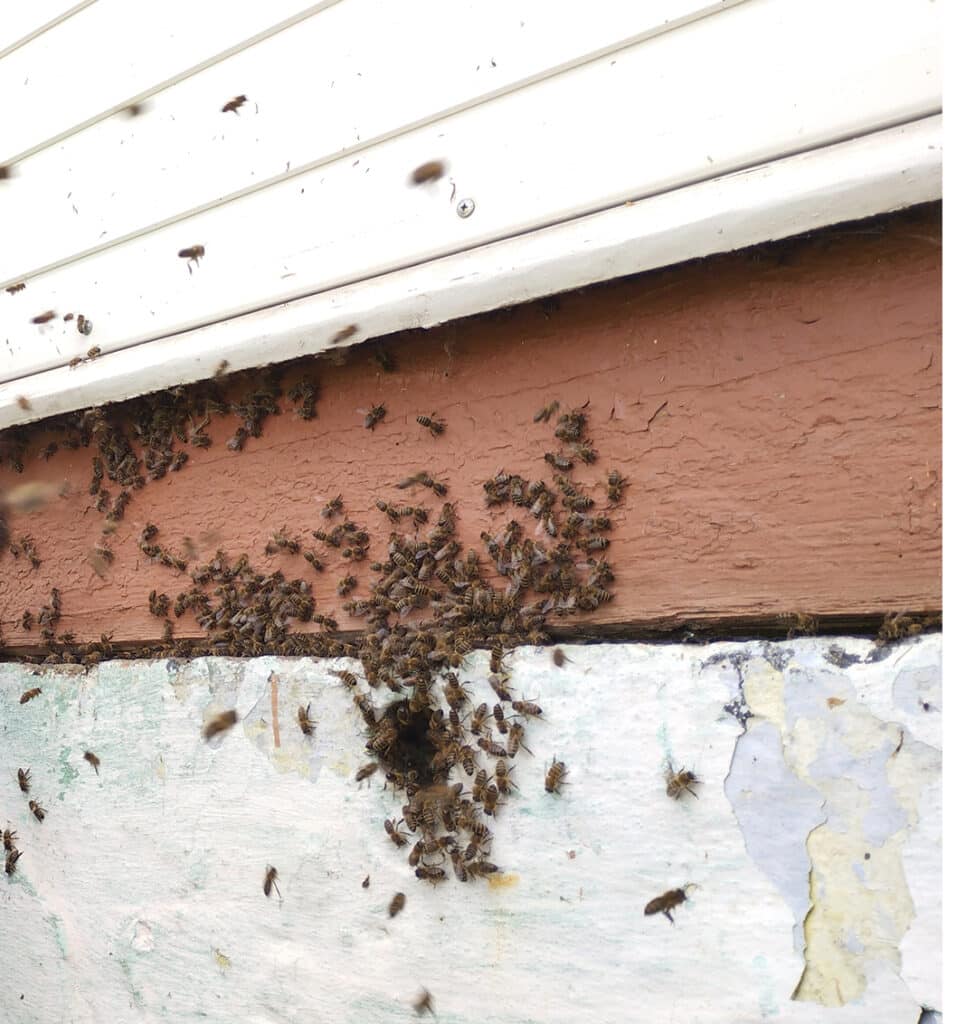
Common Bee-Inflicted Damages
| Damage | Description |
| Wall Stains | Bees can create unsightly stains on your walls, especially if the hive is located within them. |
| Structural Damage | When bees construct their hives within your home structures, it can lead to weakening and damage over time. |
| Attraction of Other Pests | Honey bees bring honey, which can attract other pests like ants or rats. This might lead to an escalated pest problem. |
Be aware and act promptly to prevent your home from becoming a bee-friendly zone.
Carpenter Ants
Do you spot some large black ants in and around your home? If yes, you might be facing a carpenter ant infestation.
How To Identify Carpenter Ants
Carpenter ants are often confused with termites, but there are ways to distinguish between the two. Here’s what you need to look out for:
- Size: They are typically larger than other ant species, ranging from 3.4 to 13mm in length.
- Color: Most are black, but some species can be red or yellow.
- Wings: Carpenter ants have two sets of wings with the front pair being larger than the rear pair.
- Waist: They have a narrowly constricted waist, unlike termites.
- Antennae: These ants have elbowed antennae, while termites’ antennae are straight.
Quick Tip: Soldier termites and carpenter ants both have large mandibles, but termites’ mandibles are more prominent and noticeable.
The Damage Carpenter Ants Do To Your Home
While these insects don’t eat wood like termites, they destroy it to make their nests, which can lead to significant structural damage over time.
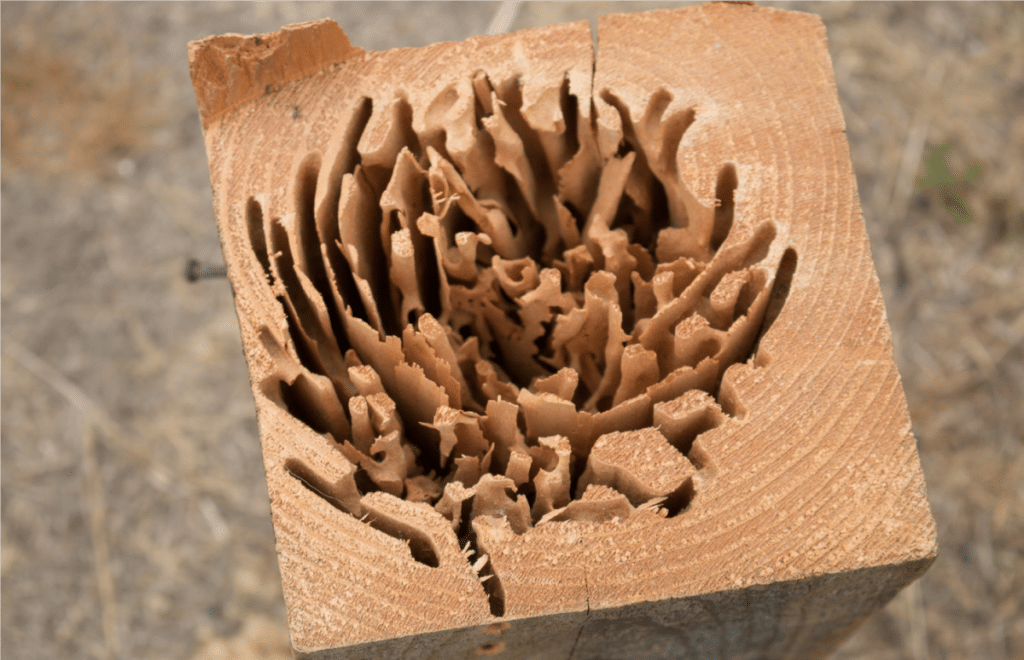
| Type of Damage | Explanation |
| Hollowed Out Wood | Carpenter ants remove wood to create smooth tunnels or ‘galleries’ for nesting. |
| Sawdust and Debris | They leave behind sawdust-like material and dead ants, which indicate an active nest. |
| Structural Damage | If left unchecked, long-term infestations can cause significant damage to your home that may require expensive repairs. |
So, if you suspect a carpenter ant infestation, it is imperative to act quickly to minimize the potential harm to your home.
Cockroaches
Ideally, you never want to see a cockroach in your home. But if you do, how can you recognize an infestation? And just how harmful can these pests be to your home?
Identifying a Cockroach Infestation
There are specific signs that suggest you might be dealing with a roach infestation:
- Fecal droppings: Cockroaches leave behind small, dark droppings that often look like coffee grounds.
- Egg cases: These are small, brown casings that the adult females drop. They’re usually hidden in cracks and crevices.
- Odor: A large cockroach infestation can often produce a musty, unpleasant smell.
The Damage Cockroaches Can Do
Cockroaches are not simply an unsightly nuisance. They can cause some serious damage if not dealt with promptly:
- Food Contamination: Cockroaches are known to crawl in garbage and sewers, potentially picking up a range of harmful bacteria and viruses which can contaminate your food. This can lead to food poisoning and other serious health issues.
- Structural Damage: As alluded to in the quote, cockroaches can damage your home’s structure itself by gnawing through materials like paper and electrical wires.
- Allergens: Many people are allergic to cockroaches and their droppings. Prolonged exposure can lead to allergic reactions and asthma attacks. In conclusion, it’s crucial not to underestimate the damage that cockroaches can cause.
Rats and Mice
Wondering about the tell-tale signs of rats or mice? Look out for droppings, gnaw marks, tracks, and unusual noises, especially during the night.
Identifying a Rat or Mouse Infestation
- Droppings: New droppings are shiny and putty-like in texture, while old ones are hard and crumbly.
- Gnaw Marks: New gnawings are light-colored, indicating fresh wood. Older gnawings become darker.
- Tracks: Runways in dusty areas may provide evidence of rodent travel. These paths are clear of debris, showing greasy marks and footprints.
- Noises: Nests are often built in quiet and hidden places. Listen for noises such as scratching, gnawing or squeaking.
Quick action is crucial to avoid significant problems when signs of rats or mice are evident.
The Damage Rats and Mice Do to Your Home
Rats and mice can cause significant damage. They gnaw through materials and nest in walls and attics. They weaken structures, chew through wiring which can cause fire hazards, and contaminate food, increasing the risk of disease.
- Gnawing: Rats and mice teeth grow continuously, and to keep them in check, they have to gnaw on things. The gnawing can damage furniture, books, and even the wooden structure of your house.
- Nesting: They create nests in the insulation of walls and attics, compromising the warmth of your home.
- Chewing: They chew on your home’s electrical wiring, risking potential fire hazards.
- Contamination: Rats and mice, with their droppings and urine, contaminate not just food items, but also food preparation areas. This increases the risk of spreading diseases.
